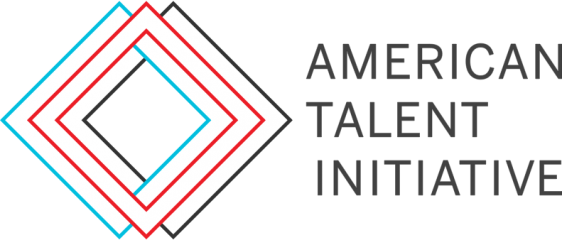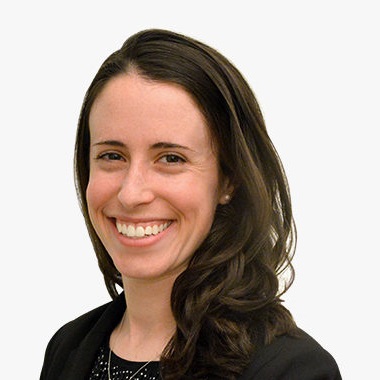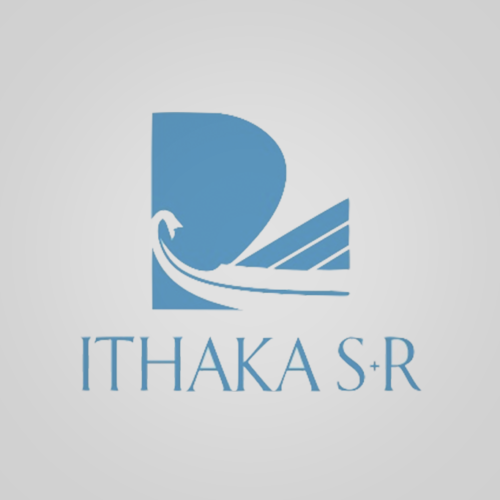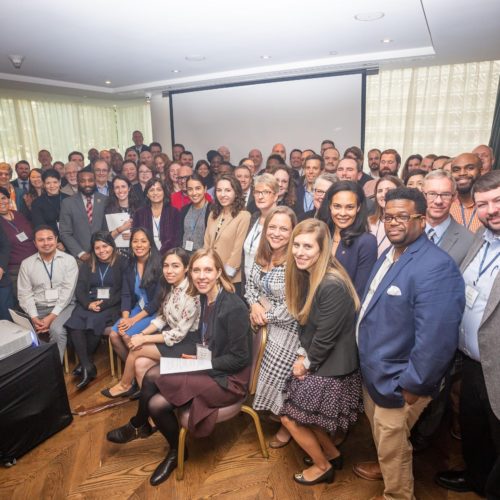From Service to Study Exploring Barriers and Expanding Opportunities for Veterans in Higher Education
New Practice Brief from the American Talent Initiative
Sindy Lopez, Emily Schwartz, Elizabeth Davidson Pisacreta
November 14, 2024
Reading Time: 13 minutes

On Thursday, September 19, 2024, in New York City, The Teagle Foundation, Warrior Scholar Project (WSP), and Ithaka S+R convened a group of higher education and philanthropic leaders for an off-the-record, roundtable discussion focused on the unique value military veterans bring to college campuses, the barriers institutions face in recruiting and supporting them, and the role nonprofit partners and education funders could play in bolstering these efforts. Committed to the proposition that an expansion of postsecondary educational opportunities for enlisted military veterans would bring significant benefits not only to these students, but also to their host institutions, the organizers sought to frame a conversation around the challenges to, and opportunities for, advancing this agenda.
The roundtable was the first collaboration among the three convening organizations. With a mission to propel enlisted veterans and service members toward success in higher education and beyond through transformative programming, WSP has been a leading advocate for the support and extraordinary potential of veteran students for more than a decade—the organization recently celebrated an important milestone: it has served more than 2,500 veterans through its humanities, STEM, and business bootcamps. Ithaka S+R has been tracking veteran educational attainment and writing about institutional barriers to it since Catharine Bond Hill came on board as managing director in 2016. Ithaka S+R has also sought to promote institutional strategies for veterans’ recruitment and support and to convene communities of practice dedicated to these issues. The organization primarily does this through its work on the American Talent Initiative, a consortium of high-graduation-rate institutions committed to enrolling more Pell-eligible students that Ithaka S+R has co-led since 2016 with the Aspen Institute’s College Excellence Program. The Teagle Foundation works to support and strengthen liberal arts education, which it sees as fundamental to meaningful work, effective citizenship, and a fulfilling life. Through the foundation’s efforts, in particular its Knowledge for Freedom initiative, Teagle aims, like Ithaka S+R and WSP, to broaden the pool of well-prepared students for selective colleges. The foundation also seeks to catalyze the improvement of teaching and learning in the arts and sciences while addressing issues of financial sustainability and accountability in higher education.
In addition to leaders from the host organizations, those who gathered for the event included student veterans and WSP alumni, executives of private philanthropies supporting student veteran success and higher education, and senior administrators—including those who oversee admissions departments, transfer programs, and student and veteran support services—from a range of public and private high-graduation-rate institutions with stated commitments to enrolling and supporting more veterans on their campuses. Together this group provided a 360-degree perspective on the agenda’s core topics. Participants came from both military and civilian backgrounds, an all too rare composition, as one invitee remarked. Collectively, those in attendance represented many decades of experience working at the nexus of higher education and veterans’ issues.
Agenda
To guide the conversation, an agenda focusing on pain points and strategic opportunities for collaboration among all participating stakeholders was developed by the host organizations and circulated with participants. Key items included proposed discussion of:
- Identifying and Addressing Barriers
- What challenges do enlisted veterans and higher education institutions face in the recruitment, admission, and support of student veterans?
- What does the US Supreme Court’s decision on race-based college admissions mean for veterans transitioning from the military into higher education?
- Enhancing Institutional Involvement:
- How can colleges and universities better attract, recruit, and enroll veterans to enrich campus life, and what resources are needed to enhance the support systems for student veterans?
- Building Collaborative Partnerships
- How can philanthropic leaders, veteran service organizations, research organizations, and higher education institutions collaborate to effectively serve student veterans?
- What lessons can be learned from philanthropic leaders who have actively supported other diverse populations?
The conversation was indeed both candid and spirited. In what follows, we provide further background and context for the challenges facing veterans and institutions and highlight key insights and recommendations that emerged from the roundtable, including suggestions for continuing and expanding the conversation.
Reiterating the Challenge
Research, in particular Ithaka S+R’s previous work, has demonstrated the remarkable diversity and persistence of the student veteran population. Most enlisted veterans are first-generation college students and/or considered low-to-middle income. Many are people of color, and veterans are more likely to have a disability compared to their traditional student peers. Those enlisted veterans who do go on to college are also more likely to earn their degree—a recent analysis showed that 47 percent of enlisted veterans completed their degrees within six years, contrasted with 23 percent of all first-time, financially independent students.
The diversity of the veteran population suggests that targeted recruitment of more veterans could tangibly advance existing college and university strategic goals to increase the number of students from underrepresented groups enrolled on their campuses. A novel pool of applicants, substantial efforts to recruit from the veteran population could also help offset the looming demographic cliff facing colleges and universities. These twin priorities (boosting and diversifying enrollment) were made all the more urgent, and difficult to realize, by the Supreme Court’s 2023 Students for Fair Admissions v. Harvard decision vitiating affirmative action. Yet in 2023, Ithaka S+R estimated that an increase in the bachelor’s attainment rate for US veterans from 31 percent to 53 percent would result in an additional 3.6 million veterans with degrees—a would-be victory for each of these critical goals.
Indeed, not only is the veteran population racially, ethnically, geographically, economically, and politically diverse, research has shown that veteran students bring distinctive experiences and perspectives to classrooms and campuses that prove to be of great value to their instructors and student peers. Institutions that open their doors to these students are also likely to earn public appreciation across the political spectrum for providing opportunity to young men and women who have given years of service to the nation—credit these institutions can ill afford to squander at a moment when public trust in higher education is in free fall.
And yet, little progress has been made on enrolling more veterans at high-graduation-rate institutions. Postsecondary enrollment and attainment numbers for veterans remain well below national averages. Recent studies have indicated that roughly one in three veterans have at least a bachelor’s degree, an attainment rate lower than the national population age 25 and older. This finding comes despite the fact that more than half of respondents (53 percent) to a survey of active duty, reservists, National Guard, and veterans, launched by Syracuse’s Institute for Veterans and Military Families, indicated that “educational benefits” were the reason they entered military service.
More troubling still, when veterans do use their education benefits, they do so disproportionately at for-profit institutions, where they are less likely to graduate, let alone reap the lifetime benefits earning a degree has been proven to furnish. Another known imbalance, not much progress has been made over the last decade toward improving it either. In 2015-16, post-9/11 GI Bill (PGIB) beneficiaries accounted for approximately five percent of all undergraduate and graduate enrollment at institutions that are eligible for federal financial aid, with 53 percent of those individuals enrolled in public four- or two-year IPEDS institutions compared to 68 percent of all students. During those same years, for-profit enrollment accounted for just six percent of all IPEDS enrollment, yet 24 percent of veteran students who used their post-9/11 GI Bill (PGIB) benefits did so to enroll in for-profit institutions. While modest improvements have been made on this front—in 2020-21, 18 percent of PGIB beneficiaries enrolled in for-profit institutions—that share was still 10 percentage points higher than the for-profit enrollment rate amongst all students.
Main Insights
The assembled stakeholders highlighted the ways in which the systems, bureaucracies and expectations of both military-affiliated individuals and institutions create barriers to enrolling more veterans at high-graduation-rate colleges and universities. The conversation quickly moved from single institution and organizational perspectives to a wider aperture view, focused on the sectoral obstacles to recruitment and enrollment that thwart even the most dedicated and ambitious institutional leaders and aspiring student veterans. Indeed, the systemic nature of the challenges discussed reinforced the sense among participants that collective attention and action were needed. While the conversation was wide-ranging, there was substantial agreement that the following, specific problem areas were particularly important to address in order to make progress on enrolling more veterans:
High-graduation-rate institutions have difficulty partnering with community colleges and the military
High-graduation-rate institutions looking to enroll more veterans in bachelor’s degree programs often run into difficulties partnering with the organizations that engage the most potential students: military branches and community colleges. This lack of direct and facilitated access to the largest pools of qualified applicants disadvantages both the veterans and the institutions that seek to enroll them. The obstacles presented by the military branches and community colleges differ, but the combined result is fewer student veterans finding an academic home that matches their interests and abilities.
Access to currently enlisted service members living on base can be quite limited, with military-affiliated education center coordinators mediating most on-base admissions recruiting. However, despite these limitations, some institutions are able to access, interact with, and recruit military individuals. All too often, unfortunately, these institutions have low(er) levels of student success and graduation, meaning the veterans who do go on to attend are less likely to earn the degree they are seeking, despite the availability of veteran-specific support services often boasted by these schools. Military leaders, particularly those concerned with successful transitions out of the military, should do more to welcome high-graduation-rate institutions on to bases and other points of access where they can advertise to and recruit service members.
Unlike the military branches, with a small cadre of centralized decision-makers, community colleges are much more numerous and independent of one another, making recruitment of their students all the more complex. The existing relationships between high-graduation-rate, four-year institutions and community colleges are usually focused on transfer in general, and established through articulation agreements, which stipulate how credits from an individual community college or system will transfer to a single four-year institution and/or apply toward degree programs. The number of individual relationships that a high-graduation-rate, four-year institution would need to establish with community colleges to recruit veterans are beyond the capacity of even the most well-resourced admissions offices.
These challenges are especially confounding for the simple reason that military bases and community colleges are where the soon-to-be, and already student veterans, are. Around 200,000 service members transition into civilian life each year, and of the students who participate in postsecondary programs, about 40 percent enroll at community colleges. Developing relationships and facilitating access between high-graduation-rate institutions and the organizations where potential applicants are most likely to congregate should be a priority in helping more student veterans enroll at such institutions.
The “system” is designed for “traditional” students
Applying to a four-year college is the culmination of a complex set of social, personal, and economic forces, forces that are largely designed to get high school seniors to enroll in the fall term following their high school graduation. Among other groups not included in the design of the system are veterans who are older, have more professional experience, and greater familial responsibilities, among other differences. One WSP alum noted that “the Common App essay questions are meant for young people,” suggesting that a key effort to centralize and streamline the college application process for aspiring students was not built with adult learners (a large proportion of the veteran student population) in view.
Several convening participants also described the deeply ingrained network of resources, supports, marketing, and messaging that encourage and facilitate high school students toward college application and enrollment. Standardized testing remains a significant rite of passage for high school students; high school counselors help students identify possible majors to pursue and colleges to attend; once on campus, most residence halls, often required of first-year students, do not have options for students with families and feature programming oriented toward emerging adults. As one current student veteran participant put it, “adult students have no business living among 18-24 year olds, but there are hardly any other options for a student like me.”
This constellation of pathways, social expectations, and role modeling makes it easy, or at least easier, for traditional-aged, well-resourced high school seniors to imagine themselves as postsecondary students, and to apply to and attend college. The popular media plays a role too, valorizing going to college after high school, setting that transition as the default assumption for many. In contrast, there are very few comparable supports for service members on the cusp of separation from the military and transition to the civilian world. On-base transition officers do not furnish the same encouragement, information, or expectations that service members ought to go on to college. There are scant examples of non-traditional college students in television or movies, and even fewer who are veterans. As noted above, the marketing and recruitment efforts of most high-graduation-rate institutions do not effectively reach service members.
While much of the “system” that supports high school graduates—and creates friction for transitioning service members—supersedes the influence of higher education and student veteran stakeholders, attendees noted several areas where progress could be made through concerted and collaborative effort. Advocacy and awareness campaigns may be able to broaden the lens of admissions resources and processes to be more inclusive of students of diverse ages and levels of experience. Institutions wishing to welcome veteran students can improve access to family housing options and develop residential programming that also focuses on students at various life stages. Stronger relationships between admissions offices and on-base influencers can also help facilitate information sharing about different postsecondary options and normalize the idea of service members going to high-graduation-rate institutions.
A concentrated and strategic communications effort is needed
Improving communications between institutions and prospective student veterans, not only what is communicated, but also how and where the communication happens, can also help combat the systemic bias toward “traditional” students. Attendees pointed out that many veterans are simply not aware of the institutional opportunities available to them, especially if those institutions are not geographically close, do not enroll a lot of student veterans, and do not have a big presence on military bases or in community college settings. Improving institutional communications also has the potential to have positive spillover effects, making the institutional community (staff, faculty, etc.) and other key stakeholders more aware of this important student population—a first step to addressing some of the administrative and cultural challenges mentioned above.
Many prospective student veterans view high-graduation-rate institutions as out of reach, or “not for them” as one WSP alum put it. But selective schools can counter this perception in a variety of ways: by leaning on the personal stories and experiences of currently enrolled student veterans; by welcoming veterans onto their campuses for visitation and information sessions; and by clearly communicating the value admissions officers place on the life experience and extracurricular learning veterans bring to the application process. As one attendee noted, “when I review these applications, I’m looking at the whole student—veterans often don’t see themselves, their experiences, as part of that picture.”
Institutional competition and perverse incentives can hinder enrollment yields
The admissions environment for high-graduation-rate institutions often results in fewer veterans being admitted despite all of the institution’s best intentions to enroll more. One admissions officer attending the convening lamented that all but one of the veterans they had admitted chose to attend other, peer institutions. While a boon for students presented with multiple, excellent choices, the spaces left by unaccepted admissions offers rarely result in other veterans joining the incoming class, as there simply are too few who apply.
Conversely, as admissions officers look at applicant yields, they may be less inclined to offer admission to a well-qualified applicant if they believe that the applicant would choose to attend a different institution if offered admission there. This strategic withholding of admission can ironically leave well-qualified applicants with fewer options than they might otherwise receive, while hampering institutional efforts to meet their recruitment goals for various types of students.
As long as the competition for the most qualified veterans is tight, the perverse incentives around admissions decisions will remain an obstacle for veterans and institutions alike. One possible, though not easy, solution is to increase the number of qualified veterans seeking enrollment at these kinds of institutions. Many of the obstacles restricting that pipeline of transitioning veterans are outlined above, but this quirk of the competitive admissions process will bedevil elite, peer institutions in particular as long as the pool of prospective student veterans remains small.
Imposter syndrome clouds the picture
One of the persistent barriers to developing a more robust pipeline of student veterans applying to high-graduation-rate institutions is that they too often do not recognize themselves as qualified applicants. Imposter syndrome, the sense that one has not earned successes or that one does not belong in certain settings despite evidence to the contrary, is a common affliction in today’s hyper-competitive and image conscious society. Yet while many students experience imposter syndrome, veteran students are particularly susceptible. Despite the accumulation of accomplishments and experiences while in active service, veterans may be hesitant to apply to high-graduation-rate institutions because of concerns about being qualified enough, fitting in on campus, or being able to keep up academically. What one attendee described as a “zero defect mentality ingrained by the military,” or a perfectionist reluctance to risk failure, may also inhibit veterans who worry they will not belong or succeed in high-graduation-rate institutions from even considering applying.
As noted above, without the buoying effect of positive social expectations, encouragement from trusted mentors, and seeing students like them represented at these institutions, there are greater barriers for well-qualified veterans to overcome the imposter syndrome they may experience. This hesitancy creates a vicious cycle where the lack of veterans and a veteran community at high-graduation-rate institutions keeps veterans from applying to those institutions, thereby reinforcing the idea that veterans do not belong there. Although a substantive obstacle to overcome, the cycle can be inverted into a virtuous cycle in which growing numbers of student veterans attending and graduating from high-graduation-rate institutions leads to more and more transitioning service members able to envision themselves as successful at such institutions.
Philanthropic funding hasn’t focused on veteran enrollment in higher education, and success
While veterans receive generous federal funding through the post-9/11 GI Bill, there remains a dearth of philanthropic funding made available specifically in support of veteran student access and success. Military-focused philanthropy understandably does not often touch on education after the military. In the education philanthropy space, as one participant lamented, a combination of fatigue and confusion has prevented funders from allocating resources to support veteran students and the institutions and organizations working to enroll and support them. Indeed, education funders have tended to regard veterans’ issues as a separate sphere of giving, the same participant noted—a decision that has only further reinforced the military-civilian divide.
The lack of philanthropic momentum is particularly confounding given that veteran students in the aggregate exhibit many of the same characteristics that already inspire generous support and strategic consideration from education funders; they enroll at community colleges at high rates, are often adult learners, and come from socioeconomically and racially diverse backgrounds. While student veterans incidentally benefit from existing funding devoted to these populations, there would be immense value in developing targeted philanthropic strategies that recognize and encourage support for student veterans as a distinct and worthy subset of these groups as well. Grantmaking efforts that highlight the veteran population and solicit proposals from organizations that provide support for veteran students in particular could simultaneously advance numerous equity goals guiding the largest and most impactful education funders. Funding to support research about student veterans, including further study of post-separation transitional pathways, and the incentives which guide veterans along them, evaluations of veteran-specific programs that aim to build military to postsecondary education pipelines, and even the communications efforts noted above, are just a few examples of the kind of work that can and should be prioritized by the education philanthropy sector.
Moving Forward: A Call to Action
The main insights shared above are all aligned with recommendations for action, but will not lead to meaningful change if the conversation stays within a small assembly of like-minded stakeholders who gathered last month. One clear path forward which emerged from the convening is to continue the conversation with a broader set of voices. In addition to engaging student veterans and high-graduation institutions, community colleges, the research community, education philanthropies, and military leaders are all key stakeholders, and should be involved in future roundtables and convenings. The goal for such conversations is two-fold: to increase the number of decision-makers involved, and to invite specific stakeholder groups that are usually not part of discussions like the one described in this summary.
While many conversations are happening in silos, bringing representatives from these groups together would be beneficial. Ideally, these conversations would be a launchpad for building much needed partnerships, in particular, among high-graduation-rate institutions, community colleges, military offices (including transition representatives), and nonprofit organizations working in the interstices of the disconnected space comprising these entities. It is also important to engage the right people. For example, at institutions, the strategic engagement of senior leadership, including the president and boards of trustees, can have a big impact. As the current landscape lacks the right type of communication between institutions and prospective student veterans, it’s also important to ensure that those responsible for crafting messages are engaged as well. This can not only directly impact enrollment, but can also trickle down to influence partnership building, philanthropic funding, and more.
In addition to continued conversation, we recommend interested stakeholders pursue a series of interrelated actions:
First, higher education institutions must proactively adapt their admissions infrastructures to be more inclusive of veterans. This process may involve reimagining recruitment strategies, application processes, and support services to better align with the unique experiences and needs of veterans. Institutions should develop targeted outreach programs, collaborate with military bases and community colleges, and educate admissions officers to recognize the value military service experiences can have on campus and in the classroom.
Second, there is a critical need for improved communication and partnership between the military, community colleges, and high-graduation-rate four-year institutions. Stakeholders should work together to establish pipelines that facilitate the transition of veterans from service to school. By fostering relationships with on-base education coordinators and community college advisors, institutions can ensure that veterans are aware of the opportunities available to them and feel encouraged to apply. Further, a concerted effort to build awareness on-base can push the decision-making window up, encouraging separating veterans to consider an educational pathway before they leave the military, when they are most likely to find their way to postsecondary opportunities.
Third, philanthropic organizations should recognize and support student veterans. Not only are veterans a distinct and deserving population within higher education, they also have substantial overlap with many philanthropic target populations, including students of color, first generation students, and adult learners. Increased philanthropic investment can support research, program evaluation, and the development of resources specifically tailored to veterans. By dedicating funds to initiatives that address the unique challenges faced by veterans, philanthropies can play a pivotal role in expanding access and enhancing the success of these students.
Collectively, these actions require a shift in perspective and a commitment to collaboration among all stakeholders involved. No small feat, but by addressing structural barriers, enhancing communication, and increasing targeted funding, we can create an environment where veterans are not only welcomed, but thrive in higher education settings, enriching both the individuals and the institutions they attend.



